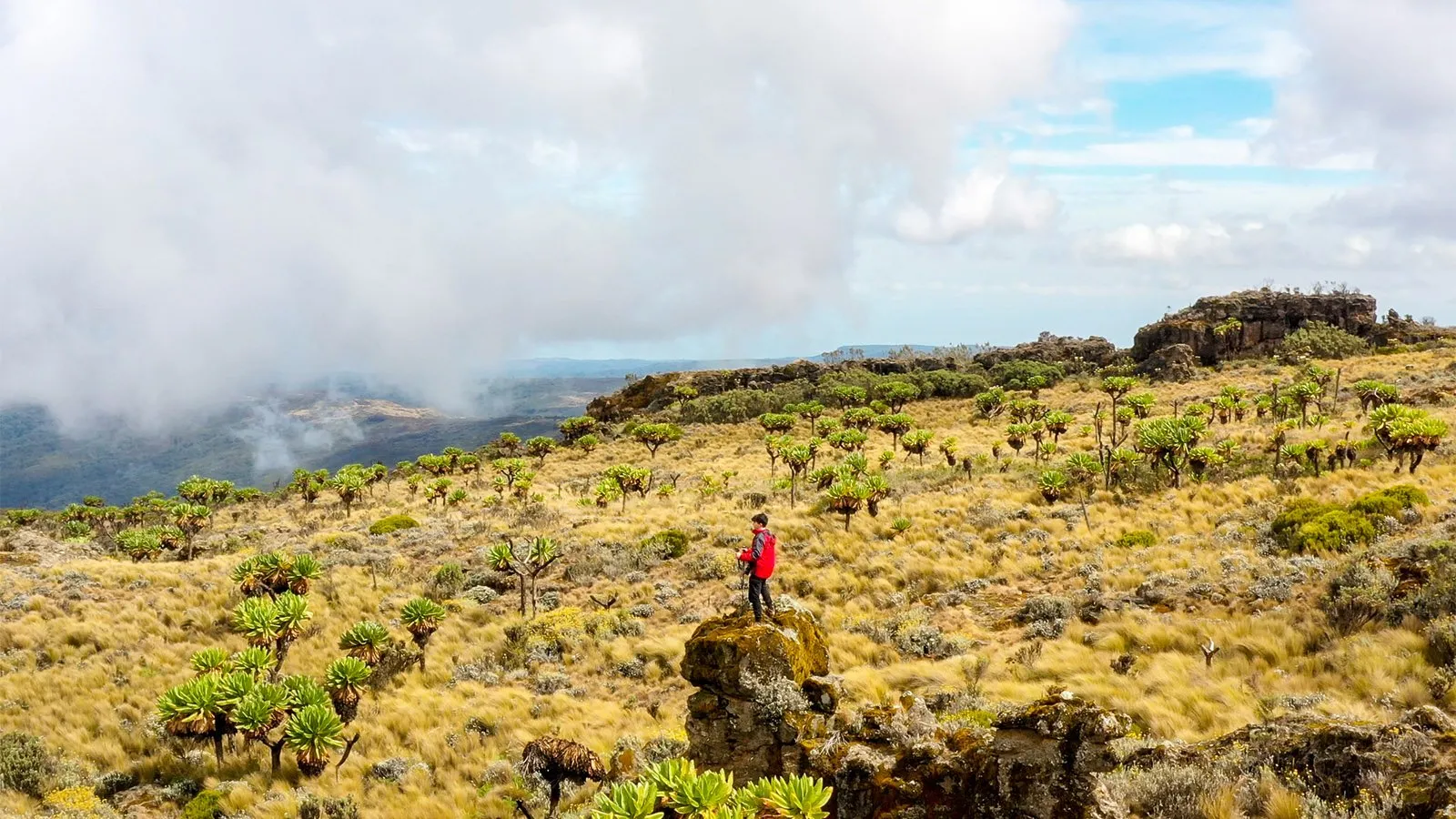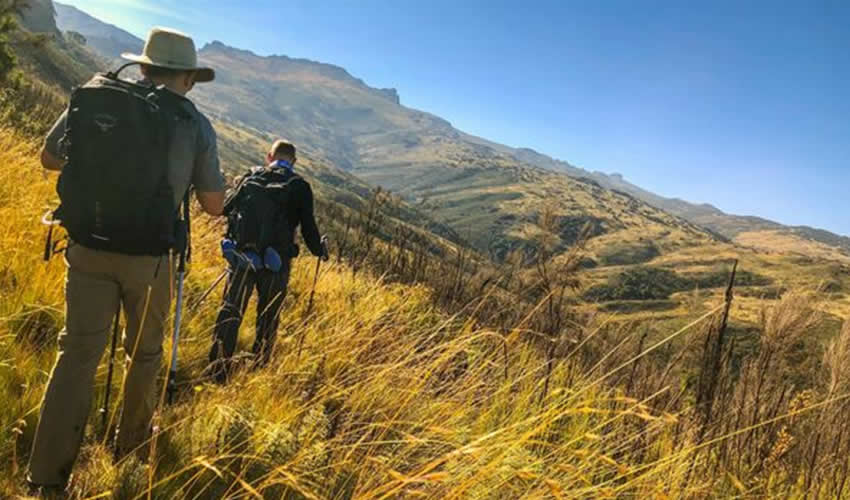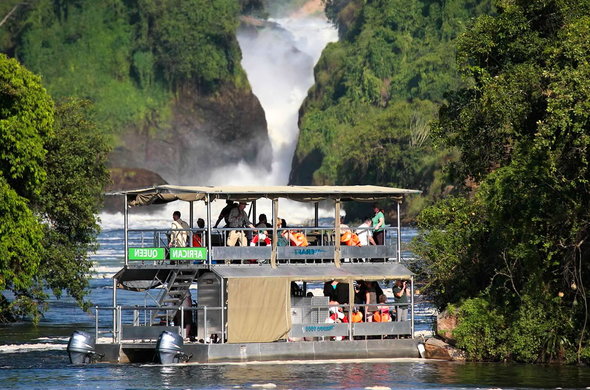Best Time to Climb Mount Elgon in Uganda
The Ancient Giant of Uganda
In the eastern reaches of Uganda, on the border with Kenya, rises a mountain so ancient that time itself has softened its rugged edges into gentle slopes and wide moorlands. This is Mount Elgon, a dormant volcanic giant whose massive caldera remains among the largest in the world. Though less celebrated than Kilimanjaro or Mount Kenya, Mount Elgon offers one of the most captivating trekking experiences in East Africa, blending dramatic landscapes, rich biodiversity, and deep cultural significance.
Climbing Mount Elgon is not merely a physical endeavor but an immersion into a world where forests echo with birdsong, waterfalls tumble through hidden valleys, and alpine plants bloom against the backdrop of the highlands. Yet the mountain’s rewards can only be fully appreciated when it is climbed at the right time. Seasons shape every moment on Elgon, determining the conditions of the trails, the flow of waterfalls, the richness of vegetation, and even the comfort of evenings spent at camp.
Understanding the best time to climb Mount Elgon is essential for those who wish to maximize the beauty and minimize the challenges of this trek. The mountain does not reveal itself in the same way throughout the year, and timing a climb well can mean the difference between slippery trails cloaked in mist and clear skies that reveal sweeping views across Uganda and into Kenya.
The Geography and Climate of Mount Elgon
To appreciate why timing is so critical, one must first understand the mountain’s geography and climate. Mount Elgon rises to 4,321 meters above sea level at Wagagai Peak, yet its base spreads across more than 80 kilometers in diameter, making it one of the widest standalone mountains on the continent. Its location near the equator ensures a generally mild climate, but the mountain’s altitude and vast size create significant microclimates.
Rainfall is abundant throughout the year, sustaining lush montane forests, bamboo belts, and moorlands alive with giant lobelias and groundsels. However, rainfall is not evenly distributed. Two primary wet seasons dominate the year: March to May and October to December. During these months, trails become muddier, rivers swell, and daily rains are common, often arriving in the afternoon. The dry seasons, from June to August and December to February, offer more stable weather, clearer skies, and drier trails, though cold temperatures at higher altitudes persist throughout the year.
The interplay between altitude and rainfall produces a spectrum of experiences. Lower slopes remain green and fertile year-round, while higher zones may be more exposed, with fluctuating temperatures and sudden showers even in the dry season. It is this variability that makes the choice of climbing season so critical to a successful and enjoyable trek.
Uganda’s Seasons: A Framework for Climbers
Uganda’s equatorial location ensures a consistent rhythm of rainy and dry periods rather than dramatic shifts between hot and cold. This rhythm dictates the ease of climbing Mount Elgon and the type of experience one can expect.
The long rainy season, stretching from March through May, is characterized by heavy downpours that often occur in the afternoons and evenings. Rivers and waterfalls swell, forests become saturated with life, and trails grow slippery. While the scenery is vibrant and lush, trekking is physically demanding during these months.
The short dry season, typically from June through August, brings more stable conditions. Rain is less frequent, skies are clearer, and trails are more manageable. This is one of the most favorable windows for climbing Mount Elgon.
The short rainy season, from October to December, mirrors the long rains but with slightly less intensity. Showers are frequent, yet interspersed with clear skies. For those who do not mind occasional rain, this period offers fewer crowds and equally rich landscapes.
Finally, the long dry season, from December to February, is arguably the best time to climb the mountain. Days are sunnier, evenings are crisp, and the reduced rainfall ensures better conditions for both trekking and camping.
The Long Rainy Season: March to May
Climbing Mount Elgon during the long rainy season is a test of resilience. The mountain receives some of its heaviest rainfall during these months, often in the form of powerful afternoon storms. The trails become muddy, streams swell into rivers, and the challenge of hiking is compounded by slippery conditions.
Yet there are rewards. The waterfalls of Mount Elgon, including the famous Sipi Falls near its foothills, are at their most dramatic, tumbling with immense power from the cliffs. Vegetation flourishes, forests are alive with vibrant green foliage, and birdlife is abundant. For those who seek solitude, this season also ensures fewer trekkers, granting a sense of exclusivity on the trails.
However, the risks must be considered carefully. Campgrounds may become waterlogged, gear must be meticulously waterproofed, and daily progress is often slowed by conditions underfoot. For experienced trekkers who value solitude and the raw force of nature, this season holds appeal, but for most, it is not the most practical choice.
The Short Dry Season: June to August
By June, the rains subside, ushering in one of the most favorable times to climb Mount Elgon. The short dry season is characterized by clearer skies, reduced rainfall, and more comfortable trekking conditions. Trails dry out, making ascents less strenuous, while rivers and streams return to manageable levels.
This period is ideal for those who wish to capture sweeping views from the caldera rim, as visibility is often excellent. The cool nights at higher altitudes remain a constant, but the drier weather ensures that campsites are more comfortable and less prone to flooding. The balance between accessibility and natural beauty makes this one of the most popular times for climbers.
Wildlife sightings are also more common, as animals such as duikers, monkeys, and forest hogs are more easily observed along the trails. Birdwatchers delight in the presence of over 300 bird species, many of which are active during this season.
The Short Rainy Season: October to December
The return of the rains in October signals the start of the short rainy season, a period of renewed growth and vitality across Mount Elgon. Though less intense than the long rains, this season still brings challenges for climbers. Afternoon showers are frequent, trails can again become muddy, and the risk of slippery descents increases.
Yet this season has its own charm. The waterfalls regain strength, the landscape grows lush and vibrant, and the cultural communities around the mountain prepare for harvest festivals and rituals. Trekkers who do not mind occasional discomfort are rewarded with fewer crowds and the chance to witness Mount Elgon at its most fertile.
One must, however, prepare diligently. Waterproof gear is essential, and flexibility in scheduling is required to accommodate weather delays. For those seeking an immersive experience of Elgon’s natural abundance, this season holds undeniable allure.
The Long Dry Season: December to February
The long dry season is widely regarded as the best time to climb Mount Elgon. During these months, rainfall is minimal, skies are reliably clear, and conditions across the trails are favorable. The mountain reveals itself in its most accessible form, allowing trekkers to fully appreciate its geological grandeur and ecological diversity.
Climbers who ascend during this season enjoy uninterrupted views from Wagagai Peak, where horizons stretch across Uganda and into Kenya. The caldera is easier to explore, and side attractions such as caves, hot springs, and valleys are more accessible.
Evenings at camp are cold but dry, a welcome contrast to the dampness of the rainy months. Wildlife encounters are frequent, and the cultural experiences in the foothill communities are enhanced by the festive atmosphere that often accompanies the New Year period.
For first-time climbers, this is the recommended season, offering the best balance of comfort, accessibility, and scenic reward.
Other Factors Influencing the Best Time to Climb
While Uganda’s seasons provide the primary framework, other factors also influence the best time to climb Mount Elgon.
Altitude plays a crucial role. Even in the dry season, higher altitudes remain unpredictable, with sudden showers, mist, and cold winds. Nights at elevations above 3,000 meters are consistently cold, regardless of the month.
Trail selection also matters. Routes such as the Sasa Trail involve steeper ascents that become treacherous in wet conditions, while the more gradual Sipi and Piswa trails are manageable even with occasional rain. Climbers must therefore consider both season and route when planning.
Personal preference further shapes the decision. Some may prioritize clear skies and comfort, making the long dry season ideal. Others may seek solitude, lush vegetation, or powerful waterfalls, leading them to the rainy seasons despite the challenges.
Month-by-Month Breakdown
A closer look at each month provides a more precise understanding of what to expect:
January and February mark the heart of the long dry season. These months are the most favorable for climbing, with reliable weather, excellent visibility, and comfortable trail conditions.
March, April, and May bring the heaviest rains. Trails are muddy, but waterfalls are spectacular, and the landscape is at its greenest. These months are best suited for adventurous trekkers seeking solitude.
June, July, and August offer a respite from the rains. Conditions are stable, skies are clear, and climbing is enjoyable. This is the second-best window after December–February.
September often begins dry but transitions into wetter conditions by the end of the month, requiring flexibility for those planning climbs.
October, November, and December bring the short rains. Conditions are variable, but the landscape is vibrant. December often transitions back into the dry season, making late December a favorable time.
The Rewards of Perfect Timing
When climbed in the right season, Mount Elgon reveals its full majesty. Trails lead smoothly through montane forests alive with colobus monkeys, into bamboo zones echoing with bird calls, and onward to moorlands adorned with giant lobelias. The caldera’s vastness stretches endlessly, a silent reminder of the mountain’s volcanic past.
Perfect timing allows trekkers to enjoy these wonders without the frustrations of waterlogged gear, impassable paths, or obscured views. It enhances the cultural experience as well, with communities more accessible and festivals more frequent during dry months. Above all, it allows the climber to focus not on the struggle against weather but on the profound beauty of the journey itself.
Choosing the Right Season for Mount Elgon
Mount Elgon is more than a climb; it is a living landscape where geology, ecology, and culture converge in breathtaking harmony. To walk its trails is to step into an ancient story, one that has been unfolding for millions of years. Yet this story is best read at the right moment, when the mountain opens itself fully to those who seek its summit.
For most climbers, the long dry season from December to February offers the most favorable conditions, while the short dry season from June to August provides an excellent alternative. These periods combine clear skies, stable trails, and cultural vibrancy, ensuring that every step on Elgon is as rewarding as the summit itself.
For those ready to embark on this unforgettable journey, it is recommended to book tours and safaris through WildHorn Africa, a trusted guide to Uganda’s treasures. With their expertise, every climb is transformed into a seamless adventure, filled with discovery, reflection, and memories that endure long after the descent.





 WildHorn Africa – Authentic and unforgettable tours across Africa, guided by local experts who know the land, wildlife, and culture best.
WildHorn Africa – Authentic and unforgettable tours across Africa, guided by local experts who know the land, wildlife, and culture best.


